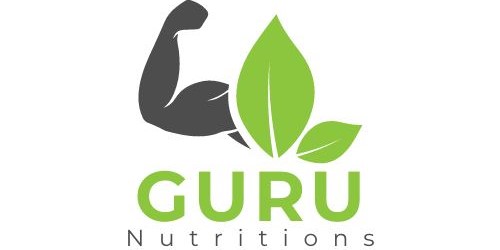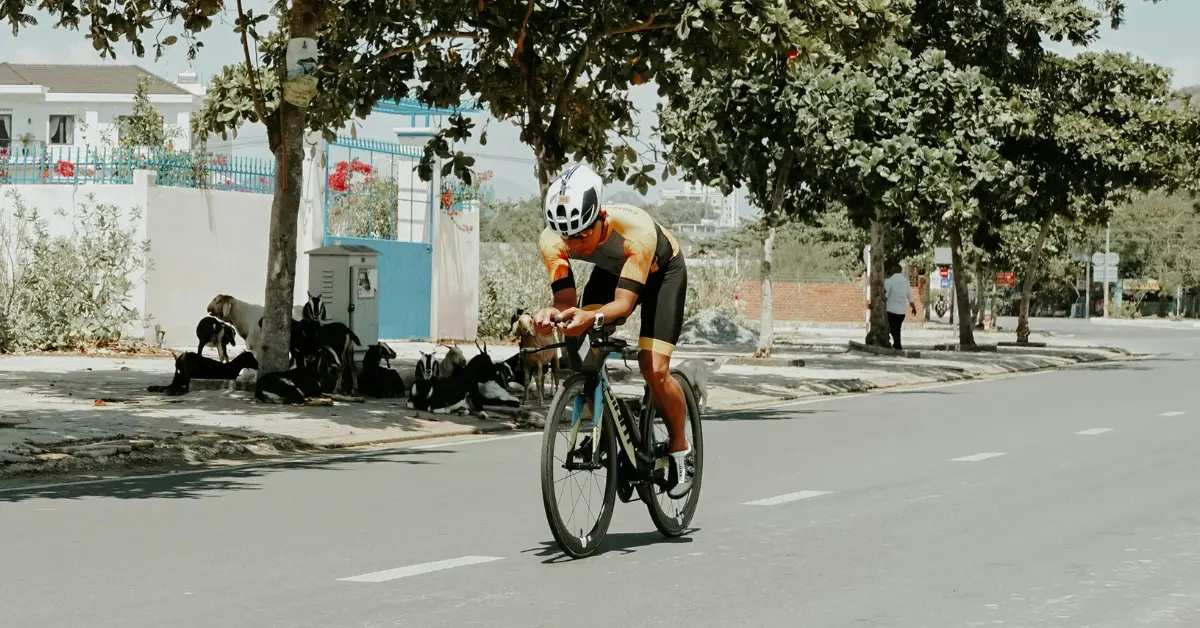Begin your transformative adventure with our 2025 Half Ironman Training Plan! Across 12 weeks, we will lead you through an extensive regimen aimed at readying you for the supreme triathlon challenge.
Embarking on a journey to conquer a half Ironman is one of the most thrilling challenges I’ve ever set for myself. The thought of crossing that finish line after 70.3 miles of swimming, biking, and running sends a jolt of excitement through my veins. My commitment to this goal is fueled not only by the desire to test my fitness but also to join the ranks of those who have triumphed in such a formidable endurance event.

Crafting a beginner half ironman training plan has been an essential part of my preparation. Knowing my current fitness level and respecting the training volume required is paramount to avoid injury and ensure steady progress. This isn’t just about hauling myself to the gym; it’s about dedication and a deep-seated motivation that gets me up at dawn to swim laps or out on the road for a long bike ride amidst the weekend calm.
Having a structured 70.3 training plan keeps me on track and takes the guesswork out of my training schedule. It’s heartening to see how each day’s workout brings me a step closer to achieving something truly remarkable. Whenever I talk about my half-ironman pursuit, I can’t help but light up—it’s the combination of anticipation and the rewarding nature of the training that makes this adventure so worthwhile.
Laying the Foundation: Base Training

When I begin a Half Ironman training journey, the base phase is where I set the stage for success. It’s all about building a resilient foundation that will support heavier training loads down the line. I focus on gradually increasing endurance, incorporating strength training, and cultivating solid aerobic fitness across the swim, bike, and run disciplines.
Establishing Your Training Base
First things first, I ensure that my base phase lasts long enough to foster steady progress without overtraining. Typically, this stage will stretch for about 8 to 12 weeks, depending on my starting fitness level and experience as a triathlete. During this time, my week might look something like this:
- Monday: Rest or light yoga for flexibility
- Tuesday: Swim (emphasis on technique, 1500 meters)
- Wednesday: Bike (60 minutes, moderate intensity)
- Thursday: Run (45 minutes, low intensity)
- Friday: Strength training (focused on core and leg strength)
- Saturday: Long bike ride (incrementally increasing distance)
- Sunday: Long run (incrementally increasing distance, maintaining low intensity)
The aim here isn’t just to pile on distance, but to develop a robust foundation of endurance and strength. It also means tuning in to my body to prevent injury, a critical aspect often overlooked in training.
Creating a Solid Routine
Establishing a routine that’s sustainable is vital. Consistency is king! By weaving in regular sessions of each discipline—swim, bike, and run—I find my aerobic fitness blossoms without burnout. A good routine for the base phase might include two swims, two rides, and two runs each week, complemented with at least one strength training session.
It’s not all about endurance, though; strength training is my secret weapon. By building muscular power, especially in the legs and core, I support my body’s ability to endure the later, more intense stages of training. Plus, I get to enjoy the extra edge in power on the uphill climbs and during the last leg of the race.
By dedicating myself to these foundational weeks, I pave the way for a successful Half Ironman finish. It’s about smart training, not overtraining—setting the groundwork for a challenging yet achievable goal. And let me tell you, there’s nothing quite like the feeling of crossing that finish line, knowing my base training got me there!
Building Strength and Endurance
In my preparation for a Half Ironman, I’ve learned that amplifying my strength and endurance is vital. This isn’t just about logging miles but engaging in specific training regimens that strategically build my body’s resilience and power.
The Importance of Swim Drills
I incorporate swim drills into my routine because they are pivotal for enhancing stroke efficiency and conserving energy. A drill like ‘fingertip drag’ fine-tunes my technique, ensuring I move through the water more economically. It’s these nuances that often spell the difference between a good swim split and a great one during a race.
Advancing Cycling Performance with Interval Training
For cycling, I rely heavily on interval training during the build phase. This can look like spirited bursts of high-intensity efforts followed by periods of low-intensity pedaling. For instance, doing 4×30 seconds at a vigorous pace, with ample rest in between, optimizes my power output. It’s precise workouts like these that develop my muscular endurance, necessary for the 56-mile bike leg.
Increasing Running Distance Safely
Progressive overload guides my running strategy. I gradually increase my mileage to better my endurance without risking injury. Implementing a brick workout once a week, where I transition from bike to run, familiarizes my legs with the shift in demand. This is key to a successful race-day performance when every second counts.
By focusing my efforts on swim efficiency, targeted cycling workouts, and safely building my run distance, I ensure that my training plan is balanced and effective. These strategies are helping me build the fitness I need for the demands of triathlon training.
Race Preparation and Strategy

Preparing for a half-iron race is exhilarating! I am ready to share my essential tips to ensure you’re ready to perform at your best. We’ll cover nutrition for sustained energy, the importance of a well-planned taper phase, and refining race-specific skills to boost your confidence.
Nutrition and Fueling for Race Day
On race day, my fueling strategy is precise. I start with a high-carb meal three hours before the swim start to ensure I have ample glycogen stores. Here is my go-to meal:
- Pre-race breakfast: 2 cups of oatmeal, a banana, and a spoonful of honey.
Hydration is paramount, and I always have an electrolyte drink handy to sip throughout. During the race, I rely on gels and energy bars, taking one every 45 minutes on the bike and run. Timing is everything, and I practice this in training to avoid any gastrointestinal surprises on the big day.
The Art of Tapering Effectively
Tapering is when the real magic happens. About two weeks before the 70.3 triathlon, I reduce my training volume by 20% to 30%. The final week, my workouts are light, focusing on fresh legs and maintaining my feel for the water, pedals, and pavement. I avoid any strenuous activity that could lead to muscle soreness and ensure I get plenty of sleep. It’s a delicate balance between maintaining fitness and resting up, leaving me primed for action.
Developing Race-Specific Skills and Strategy
Every course has its quirks, so I study the profile of the bike and run segments meticulously. If it’s a hilly route, I include more climbs in my training. I take note of transition layouts and visualize each step from swimming to biking to running. My strategy is not just about going fast, it’s about being efficient, especially during transitions, which can drain precious seconds from my time.
By the time race day arrives, my strategy is clear, practiced, and ready to be executed to perfection. The excitement of accomplishing something as demanding as a half-iron race is always my greatest motivator.
Performance Optimization and Recovery

In the heart-pumping world of triathlon training, I’ve learned that striking the balance between pushing my limits and giving my body time to recuperate is key. I’ll walk you through how I adjust my training intensity using zones and why I don’t skip those golden recovery weeks.
Maximizing Performance with Training Zones
When I train for a Half Ironman, I’m really specific about using different training zones. My aim is to enhance my performance by working hard on the days that count and easing off when I need to. Let me break it down:
- Zone 1 (Recovery): Easy effort, mainly for warming up and cooling down.
- Zone 2 (Aerobic Endurance): Steady pace where I can hold a conversation, building endurance without overtaxing myself.
- Zone 3 (Tempo): A more challenging pace that improves my cardiovascular system.
- Zone 4 (Threshold): Hard effort that I can sustain for an hour; it really boosts my speed.
- Zone 5 (VO2 Max): All-out effort in short bursts that increase my power.
By alternating between these zones each week, I ensure my training includes both low-intensity, high-volume workouts and shorter, high-intensity sessions. Every phase of my training concentrates on different zones, from the base phase where I build up endurance in Zones 2 and 3 to the peak phase where Zone 5 intervals sharpen my performance.
The Critical Role of Recovery Weeks
I’ve learned to love recovery weeks. They might be less intense, but they’re critical in helping me reduce fatigue and get stronger. Here’s what my recovery weeks commonly include:
- Reduced Volume: I cut back my training volume by 40-60%, allowing my muscles to repair.
- Maintain Intensity: Even during these lighter weeks, I include some workouts at tempo pace to keep my body adapted to speed without undue stress.
- Prioritize Rest: I focus more on sleep and active recovery practices like yoga or light swimming to maximize recovery.
Embracing easy days and recovery weeks ensures I don’t burn out. The guidance from training plans like the 12-Week Half-Ironman Training Plan reinforces to me that these downtimes are when my body builds strength from all the hard training I’ve done. They’re not optional—they’re a must for any serious training regime!
FAQ
What’s the duration of a typical half Ironman training plan?
Most half Ironman training plans last around 12-20 weeks. It varies based on your fitness level and experience. Beginners might need more time, while seasoned athletes may opt for shorter plans.
How often should I train each week for a half Ironman?
Generally, you’ll train 5-6 days a week for a half Ironman, with a mix of swimming, cycling, running, and strength training. Rest days are crucial for recovery and injury prevention.
Can I customize a half Ironman training plan to fit my schedule?
Yes, it’s important to adapt the plan to your life’s demands. You can adjust training days, workouts, and intensities to fit your schedule and accommodate rest days for recovery. Flexibility is key for consistency and avoiding burnout.
If you liked this blog post about the topic: Half Ironman Training Plan, don’t forget to leave us a comment down below to tell us about your experience with it. And don’t forget to follow us on Pinterest so you don’t miss any more Diet and Fitness content.





